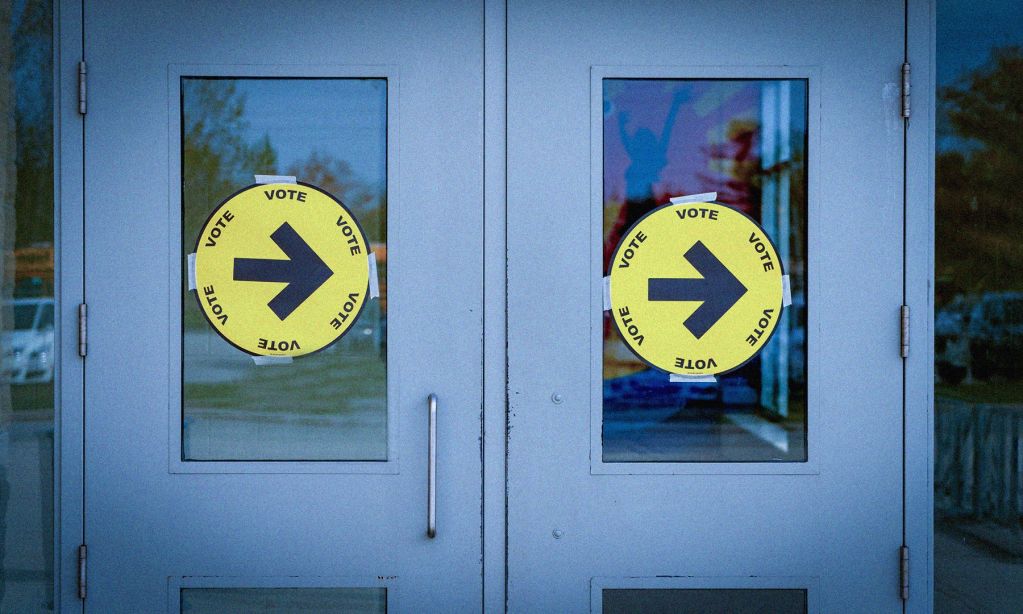“People are struggling across this country like I have never seen before in my lifetime.”
These were among the first words from NDP Member of Parliament Lisa Marie Baron in her final speech in the House of Commons advocating Motion M-86, her private members motion for a National Citizens’ Assembly on Electoral Reform, which would have began the public consultation process to fix Canada’s voting system. Despite cross-partisan support among MPs, the motion was eventually struck down by the combined voting weight of Liberal and Conservative party leadership.
Barron went on to recount the painful realities faced by Canadians who can’t find safe, affordable housing. Seniors and people with disabilities who can’t make ends meet. The devastating impacts across the country of extreme weather events resulting from the climate crisis.
It was a fitting opening for a speech on electoral reform, a topic that for too long has been deemed a “low priority,” written off as a niche interest of political scientists, or discounted as a partisan fight far removed from the daily lives of Canadians.
In truth, electoral reform is all about giving power back to the people. Our voting system directly impacts our lives, our families, and our ability to shape the future we want to see.
Over time, Canada’s unjust electoral system has had painful ramifications for the lives of everyday people―while leaving the politicians themselves largely unscathed.
Affordable housing and homelessness were first on MP Barron’s list of reasons we need to act on electoral reform, and rightly so. The political approach taken to the housing crisis can have life or death consequences.
Nothing provides a sharper contrast to Canada’s neglect and mismanagement of homelessness than Finland’s Housing First approach, which got huge numbers of people off the streets, into secure housing, and on the path to rebuilding their lives in just a few short years. Starting in 2008, the program has reduced long-term homelessness in Finland by a staggering 70 per cent.
An OECD report recounts the story of “Arvo”, whose story is just one among thousands:
“Arvo had been down and out already for a while, staying with some of his few remaining friends and occasionally hanging around in public places, stations and staircases…Staying at the hostel was better than nothing, but hardly more than that.
Today, Arvo is opening another door―except this time it is to a rental flat of his own. It’s still the same building but it has been converted into independent rental flats, completely renovated and new. The building is well-located in the city. And while the flat is not big, it has everything Arvo needs, like kitchen facilities and bathroom, and an affordable rent. When Arvo moved in he barely slept the first few nights. He kept expecting someone to come in without knocking on the door. But no one came, it is now his home, his kingdom.
Since moving in, Arvo seldom drinks anymore―he doesn’t want to run the chance of losing his home. Tomorrow is a big day: he has a job interview. Maybe this time he’ll be in luck on the work front too. He feels hopeful, there are reasons to live, and still a future for him.”
In Canada, it’s no stretch to imagine Arvo cycling through our overcrowded temporary shelters and ending up in one of the growing number of “tent cities”, while politicians squabble over whose problem it is and complain they lack the resources to even begin to solve it.
While many people have heard of Finland’s Housing First program, not many know the political story behind it. One might assume—incorrectly—that Finland is some kind of socialist utopia (or hellhole, depending on your political perspective), and that the program was brought in by a leftist government. In fact, it was spearheaded by a centre-right coalition government whose Housing Minister came from the National Coalition Party, Finland’s largest conservative party.
Involving parties from different sides of the spectrum to solve the problem was crucial to the success of the program. As the Housing Minister at the time, Jan Vaapavuori, explained:
“I think it was very important from the beginning that the program was actually led by a centre-right politician like me. We needed the 10 biggest cities in Finland to be on board, and those 10 cities had different kinds of political majorities.
We explained to each and every mayor and a lot of city councillors and so on, it is in the interest of everyone that we are able to reduce the homelessness. How it makes cities safer, how it makes cities more pleasant, and in the long run, you even save taxpayer's money.
So you could say that we had all the main parties in Finland somehow involved from the beginning, which of course creates a better basis that these programs and these concepts will be respected even in the future.”
Multi-party collaboration in the public’s long-term interest was the key.
With 100 years of proportional representation (PR) behind them, multi-party collaboration is the default modus operandi in Finland.
Even more significant than its innovation and success, the Housing First program has endured to this day (with challenges, of course) as a model for the world.
That’s another takeaway about Parliaments elected by PR—policies built with multi-party support are built to last.
In countries with winner-take-all systems like Canada’s first-past-the-post model, a single party usually obtains majority power with a minority of the vote, then gleefully tears up the programs of their predecessor. These cycles of “policy lurch” cost taxpayers billions of dollars and disincentivize investment in industries vulnerable to partisan grandstanding.
Programs and policies created under proportional governments generally benefit from majority voter support, making them much less likely to be reversed. While shifts in policies and priorities do occur when governments change, the lurches are usually much less severe.
A culture of collaboration, along with some degree of continuity in the parties forming government, provides a high level of protection for social programs and environmental programs as well.
For example, nine parties in Denmark cooperated to pass the world’s most ambitious climate legislation in 2020. Regardless of which parties form government in future, Denmark has committed to its citizens, investors, and the world that it is serious about consistently tackling climate change.
While anyone can cherrypick a story of resounding success in a single country, what is more compelling are the decades of peer reviewed research which reinforce each other’s findings.
Over the long term, countries with proportional representation have lower income inequality, higher economic growth, better health outcomes, and more resilient democracies. Research also shows that countries with PR are more ambitious about climate protection and―perhaps most relevant to Canada at this moment―the policies passed are better protected from the influence of the right wing populist parties.
In other words, on things that affect the daily lives of ordinary citizens, governments elected through proportional representation deliver better outcomes.
As MP Barron listed the struggles of Canadians before the vote on a Citizens’ Assembly on Electoral Reform, she stated: “For all these reasons, we cannot keep doing things the way they have always been done”.
The NDP, Greens and Bloc Québécois voted for Motion M-86.
Both the Liberal Cabinet and the Conservative Shadow Cabinet voted against the Motion, showing that the opposition to reform comes from the leadership level.
Astoundingly, 39 Liberal MPs and three Conservative MPs showed courage and backbone by voting for it anyway.
In a system where MPs vote the party line 99.6 per cent of the time, such a strong showing of cross-party support was nothing short of exceptional.
The Liberal and Conservative MPs who voted for Motion M-86 were not voting against their party or leader. They were standing up for a fairer, more inclusive democracy―for their constituents.
Almost every country that has achieved proportional representation arrived there when parties were willing to negotiate and compromise on electoral reform. By being willing to work together, they gave their citizens the lasting gift of a system that is more structurally sound and capable of meeting the challenges ahead.
Which begs the question: if other countries can do it, why not Canada?









